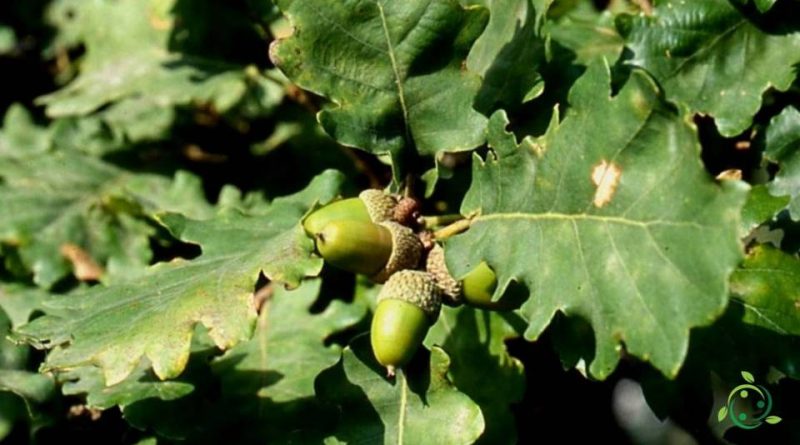Reproduction of Downy Oak
Reproduction of Downy Oak
The downy oak (Quercus pubescens Willd., 1805) is an oak of the Fagaceae family and particularly present in the Mediterranean Basin.
Suitable breeding habitat –
Downy oak is distributed in the Mediterranean basin and is present in Italy with the exception of the more inland and higher areas.
The distribution area of the downy oak which, as mentioned, extends mainly in the Mediterranean basin, has a central nucleus represented by the regions on this side of the Alps (central-southern France, the Italian peninsula and the large islands of the central and western Mediterranean) in which this oak is very common; from it branch off a western extension, which from the Pyrenees expands to the Basque territory, a northern one that goes up to France as far as Belgium (not particularly numerous and only on soils of calcareous origin) and finally a very large third extension, which affects the peninsula Balkan up to the Black Sea and penetrates into the Anatolian peninsula, in whose woods it is present even if not predominant.
In these regions the downy oak is frequent, and often dominant, in the woods between 200 and 800 m asl, being able to reach 1200-1300 m in less cold and less humid areas.
Generally in these woods, when the downy oak has an arboreal habit and is dominant, due to its heliophilous temperament, large spaces remain between tree and tree which allow the development of numerous shrub species.
It is a slow growing plant that forms pure or mixed woods, in intercropping with holm oaks and cork oaks in lower areas; yew, holly, trefoil maple, hop hornbeam and manna ash in the highest areas.
Downy oak woods are bright, both due to the deciduous leaves and the tendency to form sparse woods and because the foliage, which is also sparse, lets the light filter through. These woods are typically governed by sparse high forest, associated with agricultural crops, or wooded pastures with majestic specimens.
Propagation –
Quercus pubescens is a deciduous heliophilous and xerophilous species that usually grows from 15 to 20 meters in height, but can sometimes reach 25 meters; it is not demanding on the quality of the soil, adapting well even to those of calcareous, arid, rocky and not very fertile origin. It is considered a thermal calcicolous species as, towards the upper latitudinal and altitudinal limits (where the lowest temperatures are recorded), it grows exclusively on calcareous soils because they are less humid and hotter than those of siliceous origin. It has a very pronounced dormancy and therefore germinates late (between April and May), generally avoiding late frosts.
It flowers in April-May, bears fruit in October-November. Flowering is contemporary with the emission of new leaves. Monoecious plant with unisexual flowers often gathered in inflorescences; male inflorescences in about 5 cm long pendulous catkins, yellowish-green colour; the solitary female ones or in small terminal groups.
It is a very cold hardy tree, tolerating temperatures down to around -25°C when dormant.
Prefers a sunny location, although young plants will tolerate reasonable levels of lateral shade.
The plant is fairly indifferent to soil pH but grows in lime-rich, well-drained soils in the north of its range and is often found on acidic soils in the south.
The seed matures in its first year.
The propagation takes place by seed which, however, rapidly loses vitality if it is left to dry. It can be kept moist and cool over the winter but is best sown as soon as mature in an open seedbed, although this should be protected from mice, squirrels, etc.
Small quantities of seed can be sown in deep but sheltered pots.
The plants produce a deep taproot and must be transplanted into open fields as soon as possible, in fact seeds sown directly in the field produce the best trees. For this reason young saplings should not be left in a nursery for more than 2 growing seasons.
It should also be remembered that Quercus pubescens hybridises freely in nature with other members of the genus, including Quercus pyrenaica, Quercus petraea and Quercus frainetto.
Ecology –
Downy oak, as mentioned, is a plant of European origin with a range that includes central-southern and eastern Europe, from the Pyrenees to Asia Minor. In Southern and South-Eastern Europe, Downy Oak is one of the fundamental components of oak woods and mixed deciduous woods.
This species, which grows between 200 and 800 m above sea level, being able to reach 1200-1300 m in less cold and less humid areas, mostly forms xerothermal coenoses of heliophilous broad-leaved trees which are accompanied by a retinue of other species, including manna ash ( Fraxinus ornus L.) and, in the western sector, hop hornbeam (Ostrya carpinifolia Scop.) replaced by Celtis species (Celtis australis L., Celtis glabrata Steven ex Planch. and Celtis tournefortii Lam.) in the Balkans and Anatolia; evergreen species are becoming more numerous especially in the Mediterranean islands and in the Anatolian regions.
At higher altitudes more mesophilous species enter, including Turkey oak (Quercus cerris L.), sessile oak (Quercus petraea (Matt.) Liebl.), chestnut (Castanea sativa Mill.), some maples and various woody rosaceae.
The downy oak wood is very hard and heavy, mainly used for burning and coal; it is not suitable for processing.
However, even if the wood is similar to that of oak, it has less straight fibers, making it more difficult to work, and it also tends to warp. The beams that are obtained are used in construction, shipbuilding and once railway sleepers.
The acorns are sweet and were used not only to feed the pigs but also, in times of famine, to make a kind of acorn bread or piadina.
This species is also one of the most frequent hosts of all economically important mushroom truffles.

